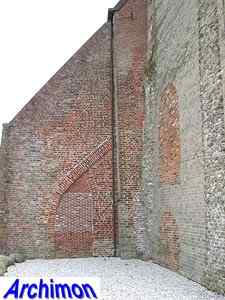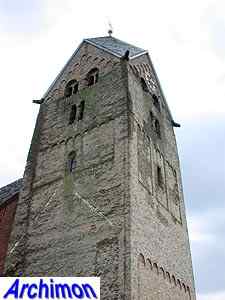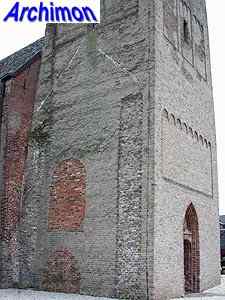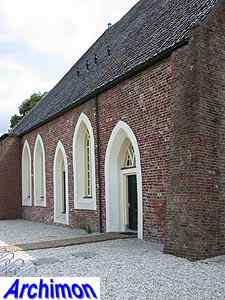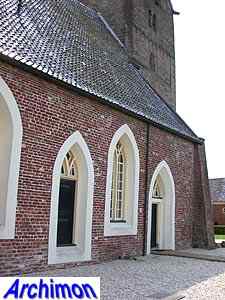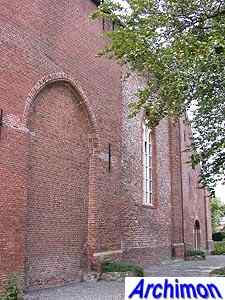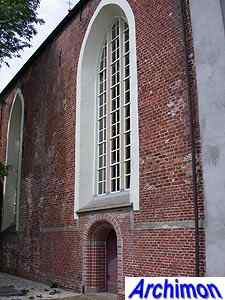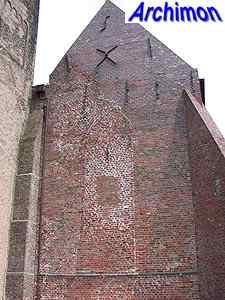
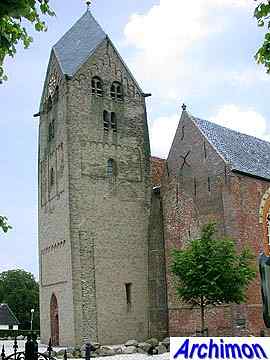
The village Bedum probably dates
from the Carolingian period. In the 11th century it became a
place of pilgrimage due to the presence of the graves of Walfridus
and Radfridus, two martyrs who had been murdered by Vikings in
the 10th century. Two churches were built. Of the chapel
of Radfridus nothing remains above the ground, and the St. Walfridus only survived
in a badly mutilated state.
In ca. 1050 work started on a three-aisled cruciform basilica
in Romanesque style, which was completed in the 12th century.
Of this church only the tower remains. Traces of arches indicate
that this tower originally was part of a reduced westwork, with
spaces flanking the tower on both sides. These were demolished
soon already. The tower leans forward, more than any other tower
in the country.
Of the original nave only a few pillars and a small piece of
wall have survived. In ca. 1484 the church was enlarged into
a two-aisled hall-church. The southern side-aisle was replaced
by a new one in Gothic style which was of the same height and
width as the nave. The southern transept-arm was renewed in the
same style and completely integrated in the side-aisle. On the
northern side either a lower side-aisle or a series of chapels
was added. An incomplete transept-arm is still recognizable.
In the first decades of the 16th century a new Gothic choir with
an ambulatory was built, fit for the church's use by a chapter,
which was demolished by the protestants in ca. 1600. In about
the same period the walls of the northern transept-arm were lowered
and partly rebuilt. Later the complete northern wall was renewed.
The sagging of the tower has been a problem for a long time.
In the 17th century buttresses were added, which already needed
replacing in ca. 1800 and were again demolished in the 1850's.
During a restoration in 1953-1958 a more perment solution was
found by in the shape of an underground counter-weight. The same
restoration resulted in the lozenge roof of the tower, which
replaced a flat roof that had covered the tower ever since a
fire destroyed the spire in 1911.




